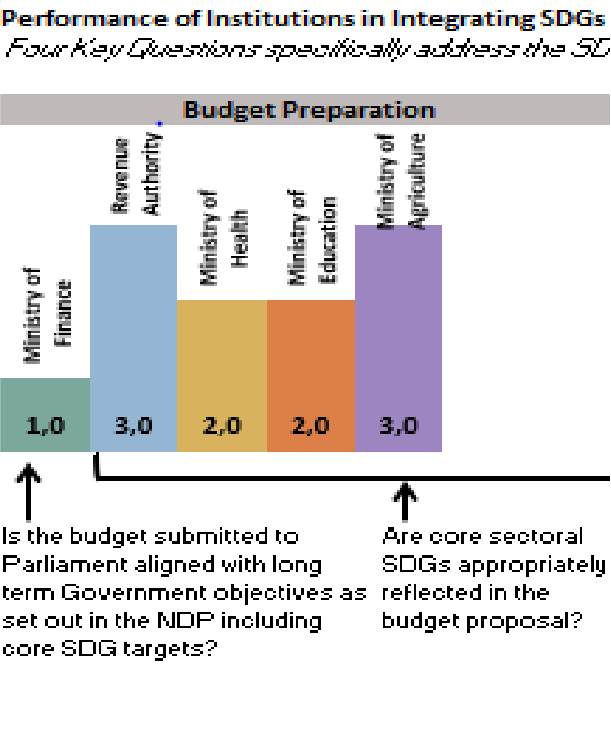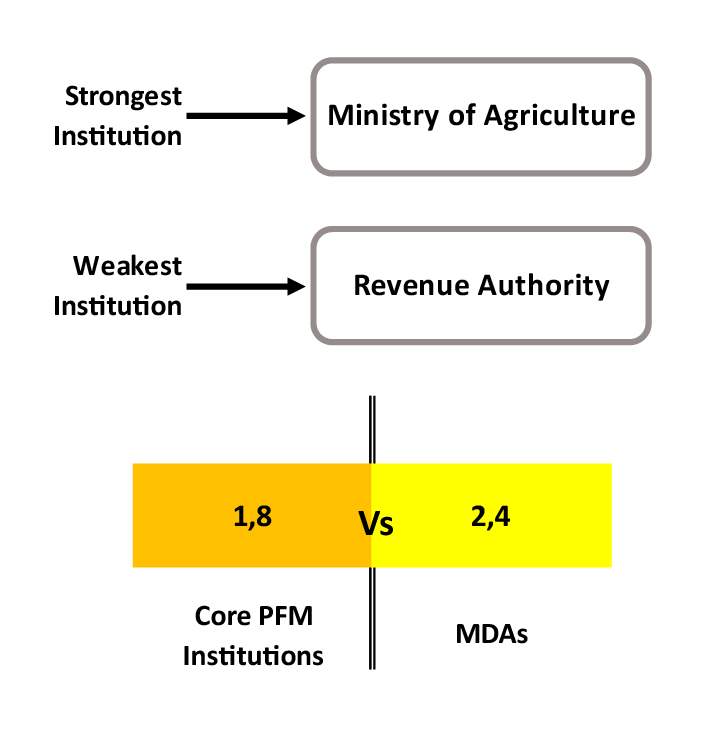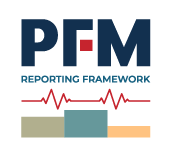About us
Welcoming Remarks
by Meisie Nkau and Maurice Ochieng
During the INCOSAI conference in 2016, theme discussions on the Sustainable Development Goals (SDGs) brought to the forefront the vital role of Supreme Audit Institutions (SAIs) in contributing to their achievement. In response, AFROSAI-E and the GIZ Good Financial Governance in Africa Programme teamed up to develop the Public Financial Management Reporting Framework (PFM RF). This tool was launched in 2018 and enables SAIs to make a meaningful contribution to the achievement of SDGs at country level.
Sound public financial management is crucial to ensure the delivery of essential services in sectors such as health and education, to citizens. The functioning of the PFM system reflects the ability of the government to turn policies from paper into a reality. SAIs are uniquely positioned to holistically audit the PFM system. They can look at institutions such as Ministries of Finance, Revenue Authorities, Parliament and selected line ministries as well as overarching PFM processes, such as budget formulation and financial reporting.
Since the introduction of the PFM Reporting Framework tool in 2018, 12 SAIs in Africa, one SAI in Europe and one SAI in Latin-America have adopted it. Five of these SAIs have published their audit reports, using version 1.0 of the tool, on the performance of the country’s PFM system. These SAIs tabled the reports in parliament and engaged the media and civil society organisations (CSOs) on the results. The SAIs have indicated that they consider the tool to be a game changer in their work as it prompts thorough root cause analysis of the PFM system holistically. The tool enables auditors to use various audit evidence gathering techniques and methods commonly used in performance, compliance and financial audits.
The PFM Reporting Framework is an excel based tool, now available in English, French and Portuguese. Complementary guides and manuals in all three languages can also be accessed on this website.
This website is intended to be a one-stop-shop for SAIs, practitioners and other interested parties. It serves as a marketplace for ideas on how we can improve the PFM systems in our countries and world-wide, through knowledge sharing and use of this tool.
We invite you to make use of the PFM Reporting Framework and encourage you to further engage with AFROSAI-E, the GIZ Good Financial Governance in Africa Programme and the community of practice.

Meisie Nkau

Maurice Ochieng
The Public Financial Management Reporting Framework
Empowering SAIs to make a meaningful contribution towards the Sustainable Development Goals
Background
At the INCOSAI In Abu Dhabi in 2016, INTOSAI members committed to make a meaningful contribution to the Sustainable Development Goals (SDGs). One of the ways of doing this is to rethink the way public financial management is audited and reported upon. Functioning public financial management (PFM) systems are central in the contribution to the achievement of the Sustainable Development Goals (SDG), as highlighted under SDG 16 which emphasizes the importance of effective and accountable institutions. In simple words: funding the goals will only work if PFM systems function efficiently. Against this backdrop, AFROSAI-E and GIZ developed a new tool for auditors, the PFM Reporting Framework assessment tool, which is currently used by Supreme Audit Institutions in over 15 countries in Africa, Europe and Latin America.
What is the PFM reporting framework?
The PFM Reporting Framework is an excel-based tool which allows auditors to assess the performance of public financial management processes along the whole budget cycle. It targets specifically the readiness of the PFM system to enable the realization of all SDGs. Moreover, it allows auditors to verify the degree of disaster preparedness of the national PFM system.
It is inspired by existing assessment frameworks like the Public Expenditure and Financial Accountability, while catering for the specificities of the work of SAIs. The assessment tool focuses on core PFM institutions such as the Ministry of Finance, Parliament and Revenue Authority, as well as important sector ministries and departments. These sector ministries are to be identified due to their potential contribution to the achievement of the SDGs and typically include the Ministries of Health and Education. With a root cause analysis, auditors go beyond symptoms and develop meaningful audit recommendations.
The results of the audit are summarized in simple dashboards facilitating easy communication of institutional performance to the audited entities as well as actors in the wider accountability ecosystem, particularly parliament, civil society and media. SAIs are encouraged to integrate the PFM Reporting Framework into their annual audit plans to enable the tracking of PFM performance over time.
Consistent and continuous reporting allows SAIs to provide meaningful recommendations to government and parliament to facilitate a systemic response to identified root causes in the PFM system impeding the SDGs. Through SAIs’ continuous application of the PFM Reporting Framework, the tool can unfold its full potential in prompting holistic and sustainable PFM reforms.
Expected benefits
- Identifying key PFM risk areas: The PFM reporting framework looks at the whole budget cycle and strives at detecting the main PFM risk areas. This ensures parliament and government can focus their reform efforts on the main identified weaknesses. It also helps the SAI to select priority issues for more in-depth audits. Identified risk areas can be the starting point for the planning of compliance, performance or forensic audits.
- Comparing entity performance: The performance assessments are entity-specific: auditors grade the level of functionality of each process in each entity. This allows comparing results between entities. When stark differences are noted auditors can make recommendations regarding potential best practices based on the experience of better performing entities.
- Understanding root causes: For each finding, auditors are encouraged to undertake a root cause analysis. This ensures that recommendations emanating from the assessments address the underlying systemic causes of underperformance.
- Understanding PFM trends: If the assessment is conducted on an annual basis, it will be possible to monitor changes and to see whether the PFM performance of the assessed entities is improving, and whether previous years’ recommendations have been implemented.
- Simplicity for users: Most information needed to complete the excel table is already available through existing audit procedures. After using the tool for the first time, auditors will quickly identify which information is missing, and be encouraged to collect the missing information during their future audits.
- Clear reporting to stakeholders: On the reporting side, results on public financial management are not well communicated and rarely spur debates in Parliament. In many countries, the recommendations are not implemented. The PFM reporting framework is not about lengthy technical notes. It directly translates the results of the tool into a dashboard and ensures stakeholders can immediately grasp the PFM performance of each entity. This summarized information is easier to digest and more likely to encourage discussion. Progress over time can easily be monitored by external stakeholders.


